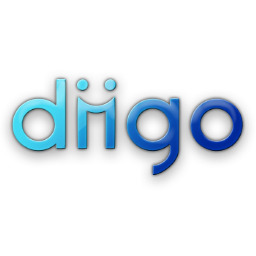A
PLN is a “Personal Learning Network,” meaning a virtual community where people
can come together from around the world with the purpose of learning together.
PLNs can connect people who would normally never come in contact with in order
to collaborate. I use a few tools that create my PLN, Twitter, Diigo, and Ning.
As a teacher, the tools I used to create my PLN will help me greatly. I have a
whole community of people who can support and assist me as a begin my journey
from student-teacher to first year teacher.
I
have begun to “Tweet” for the first time ever. I never expected to get a
twitter, but after the many assignments, I now understand the benefits. I
created my network first, connecting with personal interests. I began to follow
BBC World, NASA, the Chargers, and a few musicians. I also began to add to my
network through professional interests. The majority of my followers and those
I follow are members of the educational world, including students from my
technology class.
On
August 1, 2012 at 5:00 p.m., I participated in #ntchat. This educational chat
is designed for teachers, new and old, to collaborate and learn about new
ideas. The chat was “Design Thinking in Your Classroom.” It was very
structured, which was helpful as a first time chat experience. I began by
introducing who I was and why I was interested in the chat. After the meet and
greet with the other participants, the mediator jumped in. She explained the
structure of the chat, Question and Answer. At first, I was hesitant about jumping
into the discussion because I did not want to be repetitive or did not think I
could add information. After a couple of comments from others, I realized I
could add to the discussion. It was really exciting to get feedback. The hour
was filled with information as well as links to sites that covered more
information. I found myself checking what they had to say. The chat was quite
beneficial and will come in handy as I embark on my path from student to
teacher.
Diigo
is a digital bookmark site with the purpose of saving websites of interest. A
description can be added to give a summary of the information, and tags can
help sort information based on themes. I am following people in the education
field. Some are from the technology class, but some are from across the United
States. I started by looking for those interested in “social justice” and ended
with middle school educators. The people I chose to follow had great websites
and online journal articles I can use as a teacher candidate. A part of my Tag
Roll on my blog shows PLN as a major aspect. I found information by searching
“Personal Network” and “PLN.” Not all of the articles were from people I
followed, but I was able to find a great deal of insight into getting my PLN
started and using it in an effective manner.
I
joined both “Classroom 2.0” and “The Educator’s PLN.” Educator’s PLN offers
those like me step-by-step help for using the education ning. The site offers
various mediums for all types of learners, from videos to podcasts to
discussion boards. I found The Educator’s PLN to be the most user friendly. I
really liked that I was able to create a badge that fit with my blog
site. I explored the website and found an interesting post about inclusion
in the classroom. The discussion was led asking how inclusion works from the
point of view of special education and general education teachers. People that
were members of the site were then able to respond and give more information.
Perry, M. (2012, July 19). "What does inclusion look like in
your school for the student, the special educator and gen ed teacher? The Educator's
PLN. Retrieved from:
http://edupln.ning.com/group/special-education/forum/topics/what-does-inclusion-look-like-in-your-school-for-the-student-the









